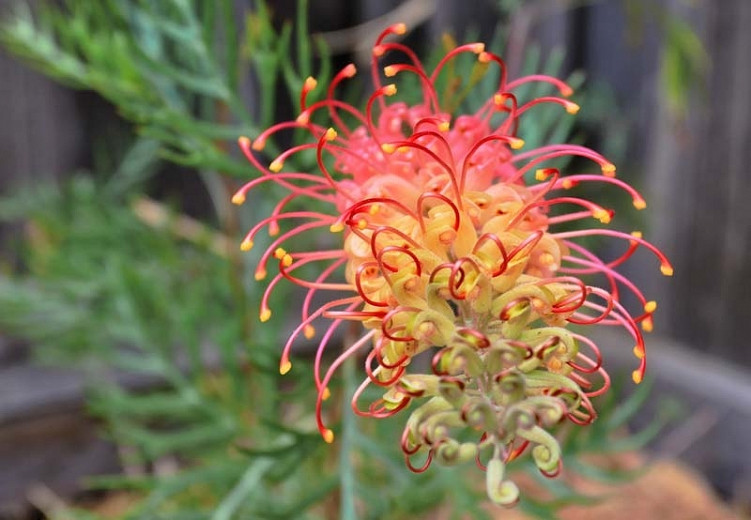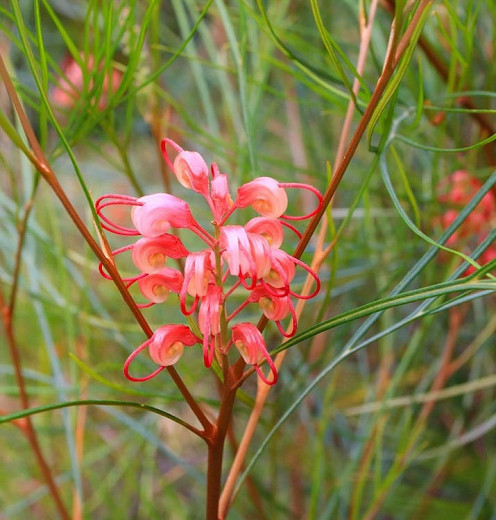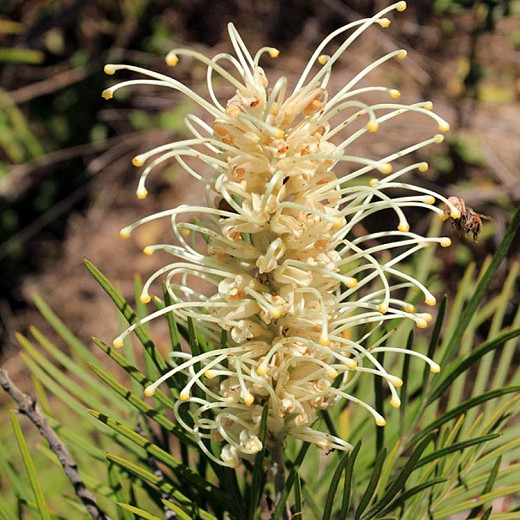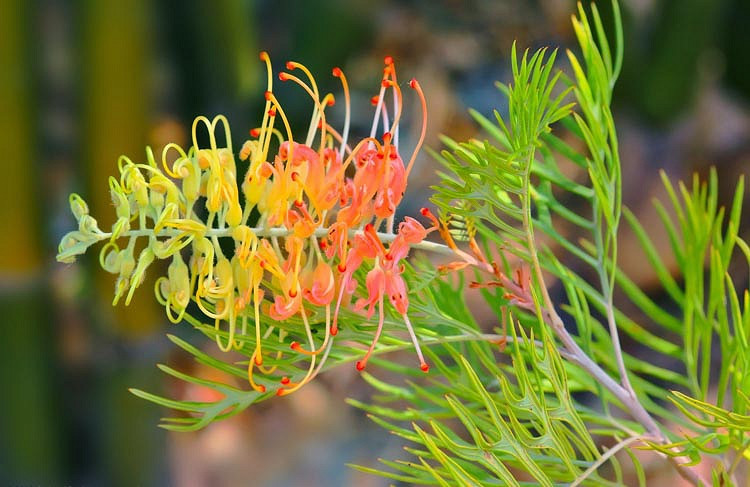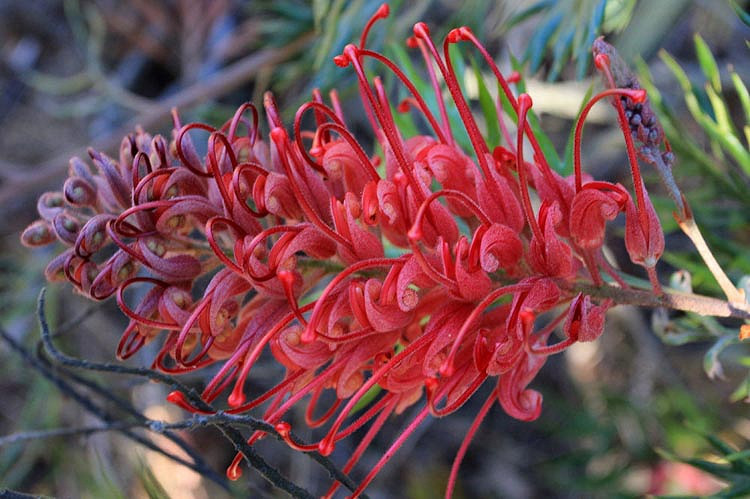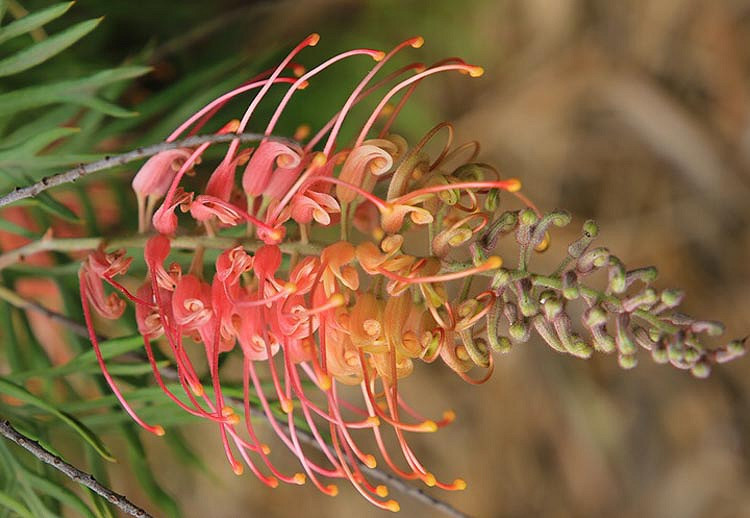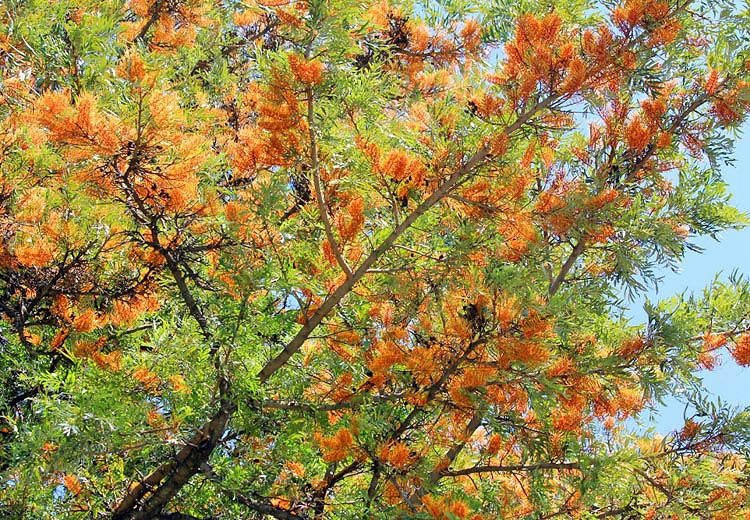Grevillea
Primarily native to Australia, Grevillea are evergreen shrubs or trees of great beauty with needle-like to fern-like foliage and incredibly flamboyant flowers. Fragrant in some species, the spectacular blooms are rich in nectar and attract hummingbirds, birds, insects, and other pollinators. Most Grevillea varieties are very fast-growing, tough, and low maintenance. Easy to grow, they tolerate drought, and heat, and grow well in poor soils as long as they are well-drained.
Primarily native to Australia, Grevillea are evergreen shrubs or trees of great beauty with needle-like to fern-like foliage and incredibly flamboyant flowers. Fragrant in some species, the spectacular blooms are rich in nectar and attract hummingbirds, birds, insects, and other pollinators. Most Grevillea varieties are very fast-growing, tough, and low maintenance. Easy to grow, they tolerate drought, and heat, and grow well in poor soils as long as they are well-drained.
- Belonging to the Proteaceae family, Grevillea is a large genus of plants, including almost 300 species and over 1000 cultivars, a number that keeps increasing as a result of the vivid interest in the plants. Mostly native to Australia, New Caledonia, and Papua New Guinea, Grevilleas are cultivated by gardeners in many areas of the world. The genus is named for Charles Francis Greville (1749-1809), a founder of the Royal Horticultural Society and friend of botanist Sir Joseph Banks.
- Grevillea range from small evergreen shrubs to large, spectacular trees. Amazingly variable, their flowers may be small and spiderlike or large and toothbrush-shaped. Petal-less, they consist of a colorful calyx tube with long filamentous, protruding styles. Available in a wide array of colors, from purest white through pink, red, yellow to orange, most of them bloom over a long period, sometimes even through the winter.
- Their evergreen foliage can be needle-like or fernlike and remains attractive foliage all year round.
- Frost tolerance varies greatly across species and cultivars. Some Grevillea are incredibly cold-hardy, while others would burn at the slightest hint of frost.
- Grevillea make fine hedges or screens or background plants.
- Grevillea require a sunny position with light, gritty, free-draining soil that is low in phosphates. As with all members of the Proteaceae family, Grevilleas should not be fed with fertilizer containing phosphorus. Most are drought tolerant once established.
- Propagation is from half-hardened cuttings; a few cultivars are grafted, and the species may be raised from seed.
Guide Information
| Hardiness | 9 – 11 |
|---|---|
| Plant Type | Shrubs, Trees |
| Plant Family | Grevillea |
| Exposure | Full Sun |
| Season of Interest | Spring (Early,Mid,Late)Summer (Early,Mid,Late)FallWinter |
| Water Needs | Low |
| Maintenance | Low |
| Soil Type | Loam, Sand |
| Soil pH | Acid, Neutral |
| Soil Drainage | Well-Drained |
| Characteristics | Fragrant, Plant of Merit, Showy |
| Tolerance | Deer, Drought, Dry Soil |
| Attracts | Birds, Butterflies, Hummingbirds |
| Landscaping Ideas | Beds and Borders, Hedges and Screens, Wall-Side Borders |
| Garden Styles | Informal and Cottage, Mediterranean Garden |
